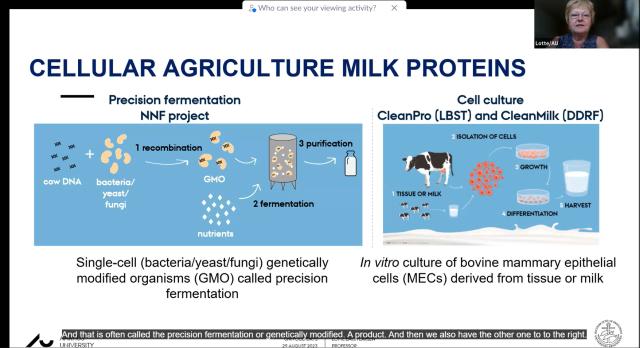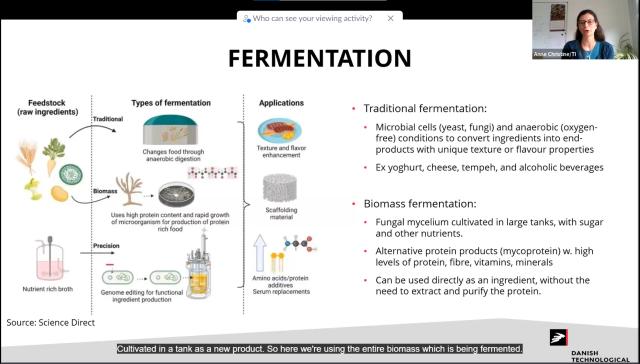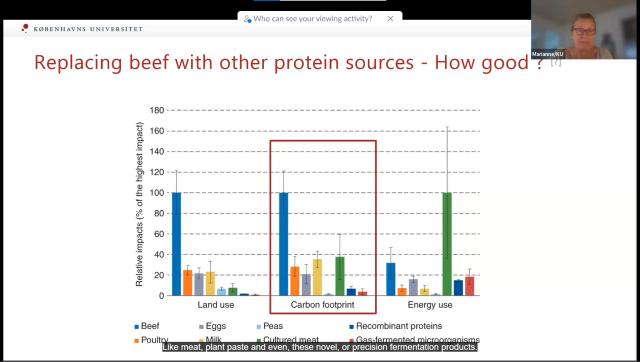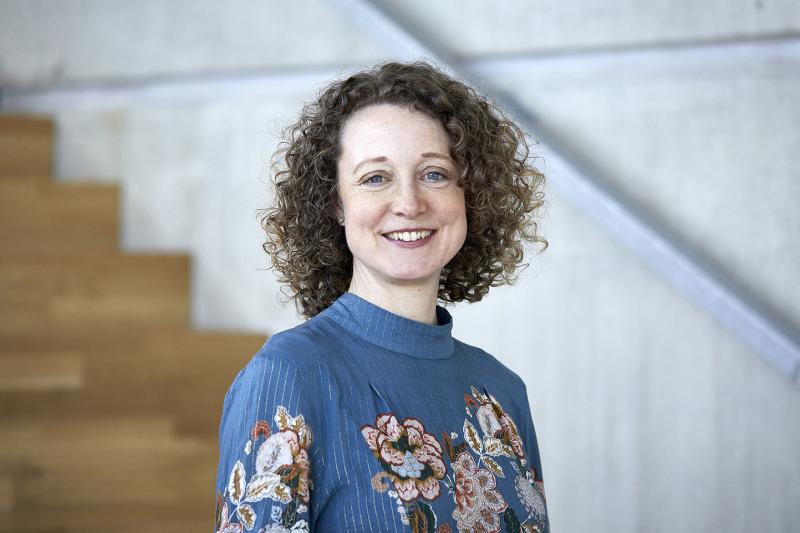Dairy proteins from precision fermentation: not milk, not sustainable yet
In September we came together for the Uni Food Day to start a dialogue and discussions between companies and university scientist. The aim was to get new insights on cutting edge science as well as industry dilemmas in a change for a healthy, tasty and sustainable future food system. And we did so with great success and valuable output. Read the recap of the sessions, or watch the full session videos at the bottom of the page.

Protein expert Christophe Schmitt from Nestlé Research started off and asked three university scientists about their view on the potential of dairy proteins and how to best select among alternatives considering aspects of consumer acceptance, functionality and feasibility.
Nestlé is constantly looking to optimise products targeted towards e.g., people with lactose intolerance and follows the development of precision fermentation with interest.
Leading expert on food proteins professor Lotte Bach Larsen from Aarhus University referred to a recent study which estimates that dairy proteins from precision fermentation are widely used by the industry more than 10 years from now, and suggests companies to investigate current, available alternative proteins such as microalgae, potoato, pulses and beans.

First of all, you need to define, which functionality you want the protein to have


From Lotte Bach Larsen’s presentation on milk proteins from precision fermentation
Matureness is still needed
Precision fermentation still needs to mature much more before the commercial potential can be harvested, which among others is related to scaling costs and the development of efficient processes. An area that Associate Professor from DTU Seyed Soheil Mansouri is investigating using multi-scale modeling as well as suggesting and implementing practical solutions in collaboration with Danish startups.

To expect you get a milk which has never seen a cow is not the right premise

An important obstacle to address is the problem on how to ensure consumer acceptance of the premise that the proteins have been created with cell modification. Associate Professor Marija Banovic from the MAPP centre, which studies consumer behaviour, introduced the preliminary findings of an ongoing study, which analyses consumers’ likeliness to purchase hybrid products, plant-based and conventional.
Later, the debate turned towards aspects of sustainability of precision fermentation. This question was risen by Director of New Foods, Micael Simonsson from the processing division of Tetra Pak, who wants to stay up to date in order to better support their clients, among others within future proteins. He mentioned that precision fermentation origins from pharma, where it is used to produce e.g., medicine components of high value – but now, with similar technologies, we want to reduce the land use and produce high volumes of food ingredients.

The trouble is moving from high value, small scale into low value, big scale
First, getting an overview of the full LCA requires a lot more research and capture of data, as most parametres of precision fermentation must be assumed since there is too little data available, even to the section for Quantitative Sustainability Assessment, a part of DTU’s Dept. of Environmental and Resource Engineering. This was presented by Senior Researcher Mikolaj Owsianiak from the same institute.
Director Bioresources and Head of Biosolutions Technology Center at the Danish Technological University Anne Christine Hastrup explained the current work on testing scalability, co-production and valorisation of side-streams, but acknowledged that much more research, development and testing is needed before the area is financially viable.

From Anne Christine Hastrup's presentation on fermentation
Industrial Symbiosis
Another suggestion by Marianne Thomsen, Professor of Sustainability Assessment – Sustainable Food Processing and Production from University of Copenhagen was to engage further in the development of so-called “industrial symbiosis” in which one company’s side stream is the input for another company. And to develop the technology in order to be able to use side streams as feedstocks for precision fermentation. Today, most feedstock is pure, white sugar, which puts a pressure on land use.

Instead of mimicking existing products, we should mimic nature
.jpg&width=64&crop=0&format=webp&compression=75)

From Marianne Thomasens presentation alternative protein sources
Asked directly, all three scientists believe that in the future, precision fermentation is a part of the food system – hopefully supporting and integrating well in the existing food value chains rather than adding new waste streams to a food system which produces too much food but wastes more than 30% from primary production to consumption.
At Food & Bio Cluster Denmark, precision fermentation, circular processes, upcycling and industrial symbiosis are elements gaining attention e.g. in initiatives and projects such as Biosolutions, ZeroW, the network for side streams and of course the innovation support programmes.
Did you miss out on this year’s Uni Food Day? Watch the videos below or contact Heidi Høy, hhd@foodbiocluster.dk.
The event was supported by the Danish Ministry of Higher Education and Science.
Did you miss Uni Food Day? Watch the sessions, here
Watch the video
Uni Food Day 2023 – Session 1
Nestlé – Precision Fermentation of Dairy Proteins
Watch the video
Uni Food Day 2023 – Session 3
Tetra Pak Processing – Sustainability aspects of Precision Fermentation
